For a tropical country Brazil has some impressive evergreen trees, at least in the mountainous regions of the country. In fact, the claim-to-fame of the state we are living in is the majestic Araucaria tree. There are about 19 different types of Araucaria tree and each looks just a little different.
While some varieties can be found in other parts of South America, the type the state of Paraná is known for is the Araucaria angustifolia. It is also sometimes called the pinheiro-do-paraná (the Paraná pine). There are a few where we are living, but many more in Curitiba, about a 6 hour drive away, towards the coast. They can also be found in a few states north and south of here such as in Santa Catarina where the island of Florianopolis is located.
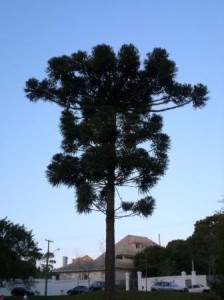
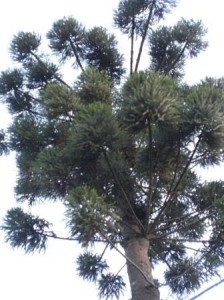
The trees have different shapes, but I love the ones that are more flat along the top. The branches extend out to make them almost look like a candelabra.
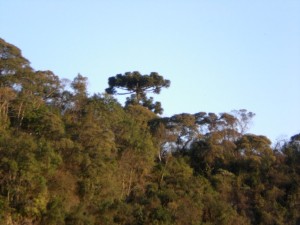
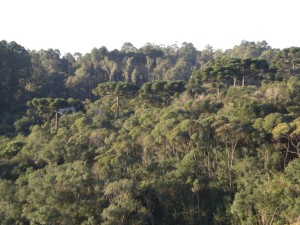
So what does all this talk about trees have to do with food?
Well, the pine nuts from the Araucaria tree can be eaten and happen to be quite popular around the area.
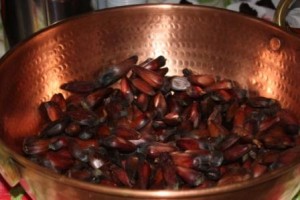
Typically available from May through July (winter), the pine nuts, or pinhão, are most often associated with Festa Junina events. This June festival celebrates rural life and is often equated to a hillbilly party. The hillbillies, so-to-speak, are referred to as Caipiras, a term which lends to the name for the popular Brazilian cocktail, caipirinha. Foods such as canjica, peanuts and popcorn are served at these parties as well as pinhão.
In addition, you can also find the nut in the supermarkets during this time of year. If you happen to be on a road trip like we were in late April you will also pass plenty of roadside stands selling cooked pinhão by the bag. The pine nut (still in it’s shell) is prepared most often using a pressure cooker and is seasoned with salt. It is also made into a soup, but I haven’t had the opportunity to try it.
When we were at the Curitiba Zoo last fall we were able to read a translated description of the pine nut including details about its nutritional value – rich in vitamin B, calcium, phosphorus and protein.
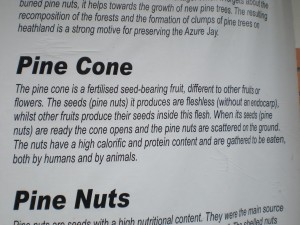
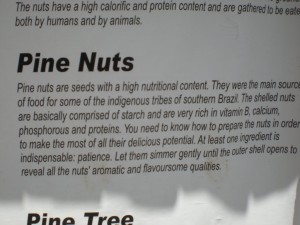
The pinhão are quite difficult to get into. Our friends here suggest biting off the end, spitting it out and then pushing the nut out with your fingers. We tried this, but I always ended up having to peel it.
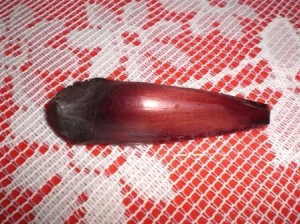
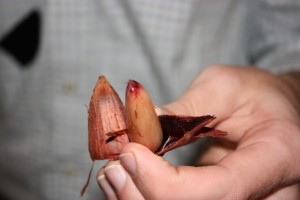
The texture and flavor are like a cross between a nut and firm bean which is enhanced by the added salt. It is a great snack, but given the difficulty of getting one open only a handful tend to be consumed at a sitting.
This has most certainly been one of those local foods we won’t be experiencing anywhere else anytime soon. Even parts of Brazil aren’t fortunate enough to enjoy this winter treat. The pinhão and the Araucaria tree are big foodie benefits of living in Paraná.

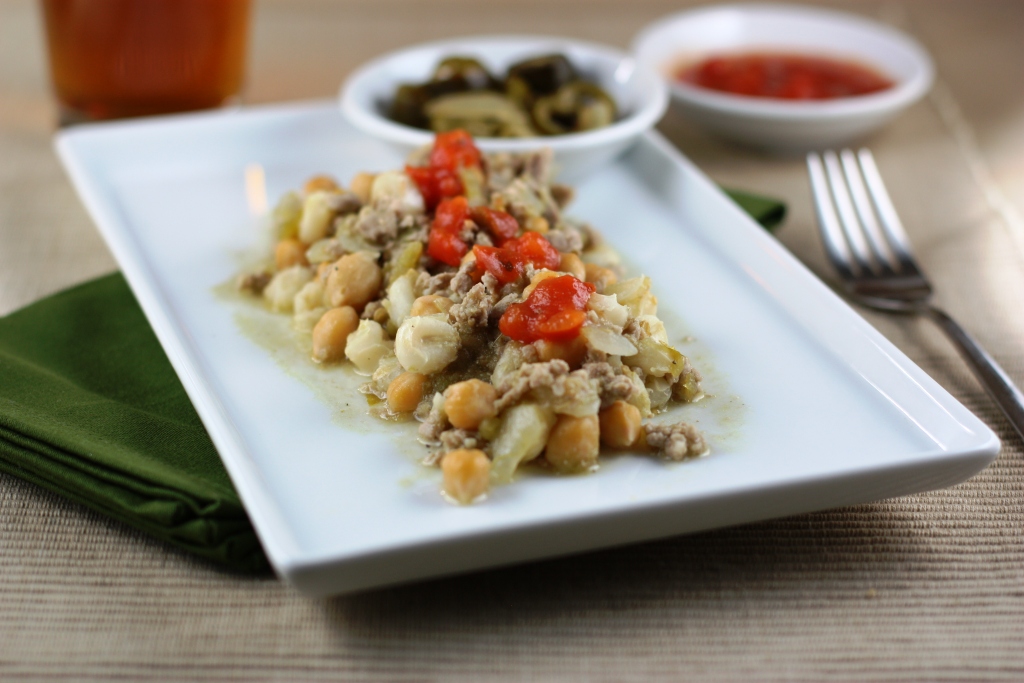

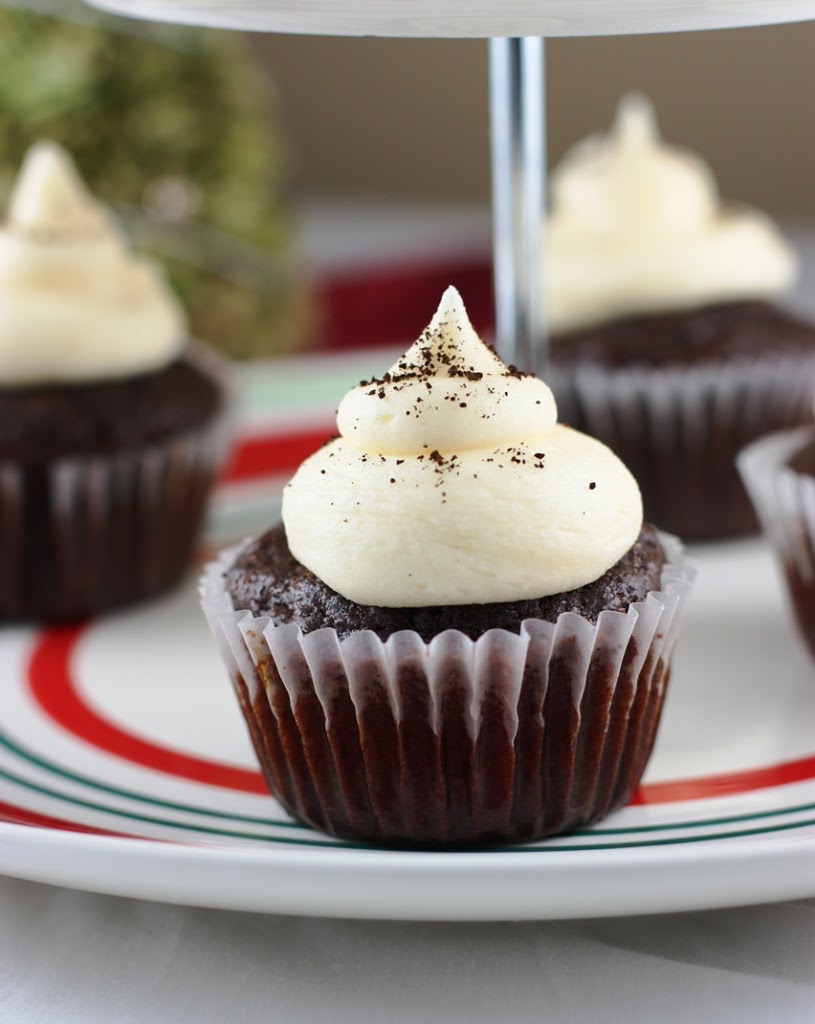


Interesting! I always learn something when I read your posts- LOVE that. Very cool that all the trees are a little different in terms of shape etc.
I was just thinking about pine nuts the other day given the forest fires, and like the redwoods they need fires to reproduce, Anyway, perfect timing and thanks so much for satisfying my curiosity.
Wow…it had never occurred to me what a pine nut shell looked like. Guess they don’t grow on the trees already shelled 🙂
So informative! Very cool trees too!
How neat! The trees are beautiful towering above the others. The nuts are so big and sound meaty and yummy.
I had no idea there was so much to learn about pine! I heart trees.
Those pine nuts are HUGE! Do they taste like the pine nuts that we can buy here in the states? You know…those itty, bitty pine nuts? They’re also a pain to shell too.
Loved this post. The trees are gorgeous, and such great information!
Erica – I’m definitely learning too! I love sharing it. 🙂
Oysterculture – Glad I could help. I’ve been curious about the tree myself lately and the post encouraged me to take a deeper look.
Alison – I’m not sure what the smaller pine nuts we eat in the US look like with the shell. Hmm…
Maria – Thanks, I like them too!
Reeni – That’s a great description. They are very meaty in texture.
Sagan – Such a blessing aren’t they. So beautiful.
cathy – They are huge, I would equate them to the size of a large Brazil nut. I actually like them a lot more than the pine nuts we get in the US, but I’m not sure how to explain the flavor difference. I think the fact that they are steamed to cook them gives them a softer texture that I like, more like a bean than a nut.
Fun to learn about these special pine nuts!
so interesting! gorgeous looking trees….
As Cathy said, these are enormous – looks to be the equivalent of a big handful of pignolas! Love the unusual shape of the pine trees, different from our cone-shaped ones. Wish I could try at least one of these nuts!
I love this nuts, I found it in Australia, but couldn’t find it here. Nobody knows about it.
Anna – Actually in my research I found that there is a species of Araucaria trees in Australia, I didn’t realize they enjoyed the nuts there to though. That is great. To my knowledge, unfortunately there are none of these trees in the States.
Lori, again, it’s me. Probably they didn’t “fly” in the US, like the jabuticaba trees (I heard there are lots in California) because they are difficulty as hell to plant. Everibody knows that around here, and it’s probably because of that that laws against cutting down Araucárias here in RS state, speacially in the Serra, are so enforced. My family tried to plant one of these in our house, in the Serra bottom where we live, and knowing they are a pain in the a** to “catch”, we planted 10 of them. Only one survived…
Good to know. I hadn’t heard there was jabuticaba in the US. I’ve heard the trees are protected had no idea they were so hard to grow. They sure are beautiful though. It’s one of my favorite parts about Parana.
Having lived in Porto Alegre, RGS as a child, I encountered the Pinhao at the Sao Joao festival at a local school (1968-1972). It IS an aquired taste…I have seen the mediterranean PINE NUT sold in the U.S. and told stories of the GIANT brazilian pine nut called PINHAO. It would make a great alternate market for the pine nut lovers…unless they are totally different in taste. Considering the price $6 plus per lb for the mediterranean…I am surprised that brazilian pinhoes are not right next to them in certain stores..
You are familiar with the Guarana drink from Brazil, I am sure. Back in the early ’70’s…if only we had known…NOW it is in so many energy products!